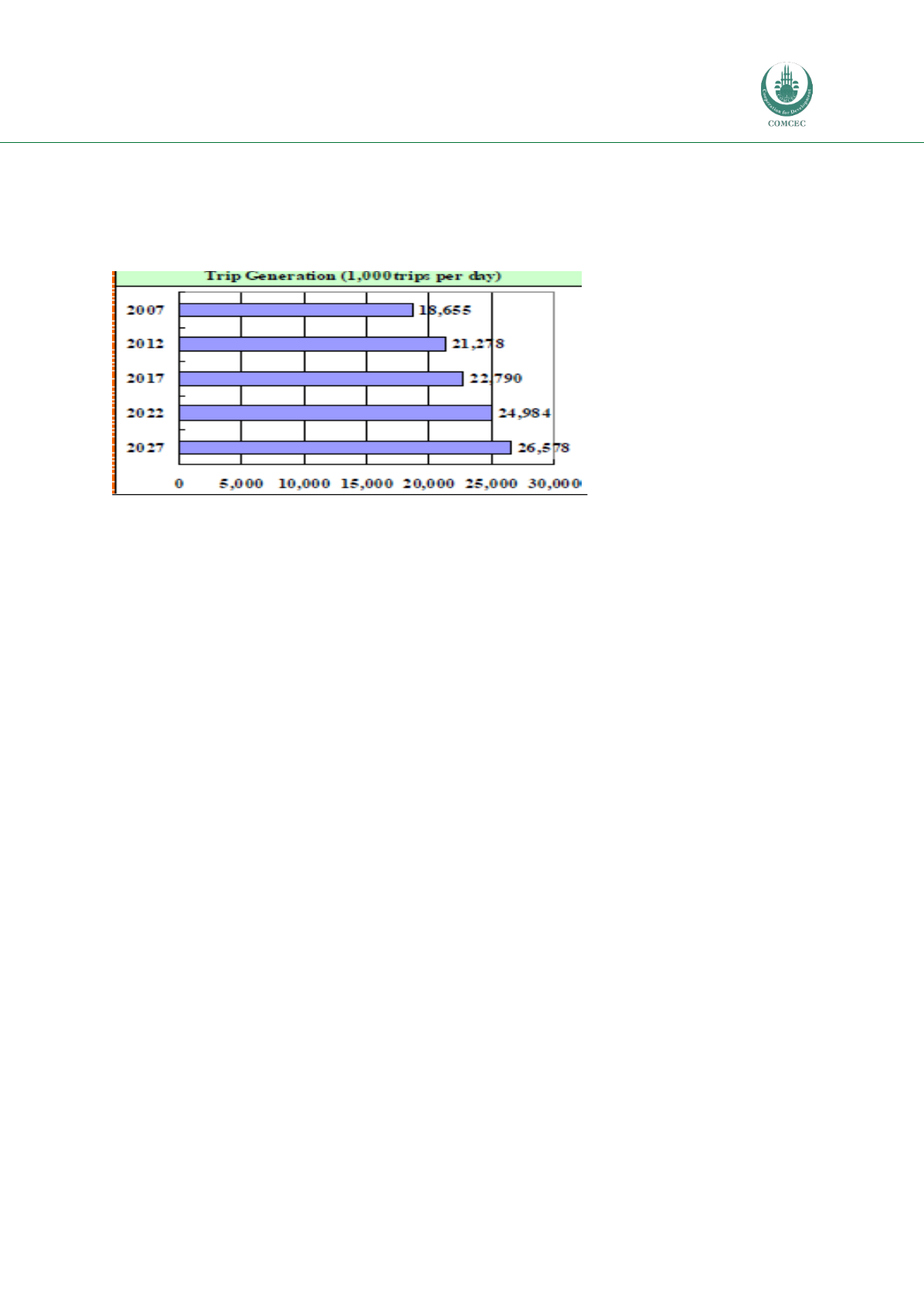

Urban Transport in the OIC Megacities
79
The 2008 JICA study indicated that the population in Greater Cairo would be 24 million by 2027 with
7 million workers and 6 million students (from a base year of 2006 with 16 million population, 4.3m
workers and 3.4 million students).The CREATS study indicated the following resultant trip generation
increase:
Figure 19: Expected trip generation increase in Cairo
Source: slide 7 JICA Study Team June 2008 2nd Seminar
With this increase in population and resultant trip generation, the JICA study identified the need to
strengthen east west transport links given the location of proposed new centres of development.
Measures considered and prioritised were:
Busways
Rail lines
Metro Extensions
4.2.2.
Transport network and infrastructure
4.2.2.1.
Introduction
While highly diversified, in terms of supply and related infrastructure and facilities, the Greater Cairo
Urban Transport System suffers major inefficiencies which translate into: poor transport services
especially for the low income groups captive of public transport modes and high economic,
environmental and fiscal costs for the country. Demand for mobility has greatly outpaced the capacity
of the public transportation system to cope. The gap has been primarily filled with private owned and
operated shared taxis (informal transport) and the use of private cars. The most critical urban
transport issues include:
Severe traffic congestion
:
Cairo is experiencing traffic congestion that places it among the worst in
the world. This has serious economic consequences and contributes to deteriorating air pollution
conditions. The average speed of traffic in Cairo is similar to that of other cities recognized for their
severe traffic congestion (Bangkok, Mexico City, and Sao Paulo). Travel speeds in the Cairo central
business district and in central Giza are typically less than 10 kph on typical business days. Yearly
economic cost of traffic congestion could reach up to 4% of Egypt’s GDP.

















